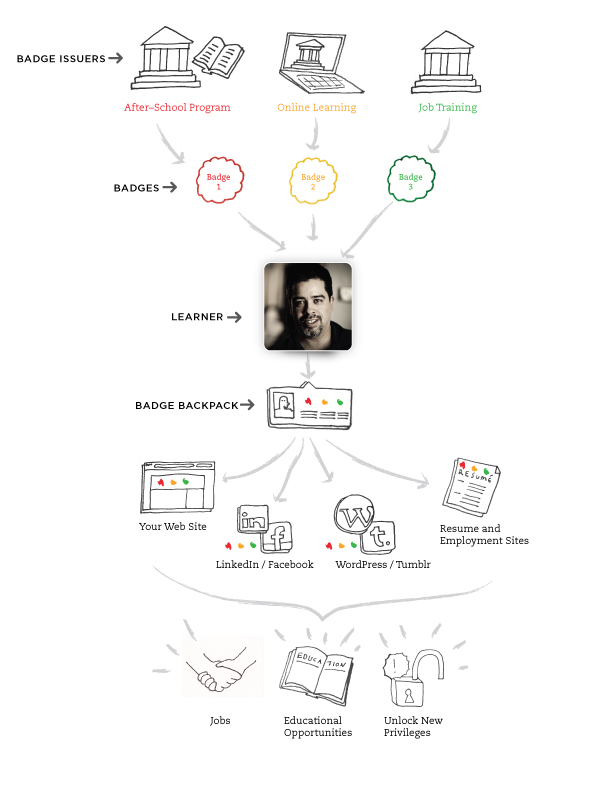...They can support learning that happens in new ways and new spaces beyond the traditional classroom. These include online courses, after-school programs, work and life experiences. By providing a more complete picture of learners' skills and competencies, badges can signal achievement to a variety of communities and institutions including potential employers, educational organizations and social groups... ~ http://openbadges.org/en-US/faq.htmlMy Approach
I will create curriculum for, and deepen my understanding of, Mozilla Open Badges by using my Agile Instructional Design (AID) methodology. I will focus on building OER for open badges from both the perspective of an education technologist and an independent learner. I will build this first set of resources as AID sprints with two iterations; the first focused on the edtech and the second on the learner.
My Learning Plan
The first task within AID is the envisioning step. This step focuses on developing an introductory understanding of the subject and creating the beginnings of a curriculum map. This is how I will fulfill the tasks within the AID envisioning step.
- Curriculum Plan
Here I will create a concept map of the open badges domain. This will also include a list of the keywords found within the domain. I will gather this by quickly reviewing all the Mozilla artifacts I can find on open badges and perform a few Internet searches to try and discover any gaps. - Learning Themes
I will build upon the concept map by identifying the learning themes. One of the themes that immediately jumps to mind is the focus on issuing, storing and displaying the badge. Rather than the assessment of earning the badge. - Learner Roles
There are two roles within this iteration; they are the edtech and the learner. I will elaborate on the roles in a subsequent post.

